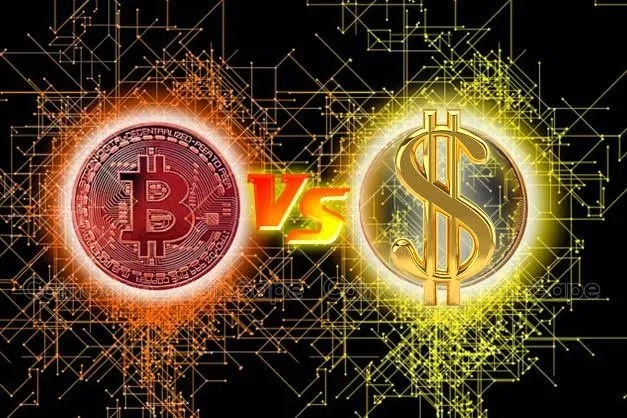The comparison between Bitcoin and fiat currency is a widely debated topic. Bitcoin is a decentralized digital currency that operates independently of a central bank, while fiat currency is a traditional currency that is issued and backed by a government. Here are some of the key differences between the two:
One of the biggest differences between Bitcoin and fiat currency is that Bitcoin operates on a decentralized network, while fiat currency is controlled by central authorities such as governments and central banks.
The Bitcoin has a limited supply of 21 million coins, while the supply of fiat currency can be increased by central authorities as needed.
The Bitcoin transactions are secured using cryptography, while the security of fiat currency transactions is maintained through government regulation and oversight.
While it is possible to make anonymous transactions with Bitcoin, the identity of the person making the transaction can still be traced through their public address. On the other hand, fiat currency transactions are not anonymous and are often subject to government reporting requirements.
Bitcoin is known for its volatility, with prices swinging wildly in short periods of time. Fiat currency, on the other hand, tends to be less volatile and more stable in value.
While Bitcoin is becoming increasingly accepted as a form of payment, it is not yet widely accepted and is not recognized as a legal tender in many countries. Fiat currency, on the other hand, is widely accepted and recognized as a legal tender in most countries.
Bitcoin and fiat currency have both advantages and disadvantages and the choice between the two ultimately depends on individual preferences and needs.
One of the major advantages of Bitcoin is that it is resistant to inflation. The supply of Bitcoin is limited to 21 million coins and its algorithm ensures that the rate at which new coins are created will slow down over time. This makes Bitcoin a potentially good store of value in the long term. On the other hand, the supply of fiat currency can be increased by central authorities, which can lead to inflation and devaluation of the currency.
The regulation of Bitcoin varies from country to country, with some countries treating it as a commodity while others recognize it as a currency. In contrast, fiat currency is heavily regulated by governments and central banks.
The energy consumption required to maintain the Bitcoin network has been a topic of concern in recent years. The energy consumption is high because the network requires a large number of computers to work together to validate transactions and secure the network. On the other hand, the production and distribution of fiat currency has a lower environmental impact.
While Bitcoin and fiat currency have their own unique advantages and disadvantages, both have a role to play in the financial world. Bitcoin offers a decentralized and secure alternative to traditional currency, while fiat currency provides stability and is widely accepted. Ultimately, the choice between the two depends on individual needs and preferences

